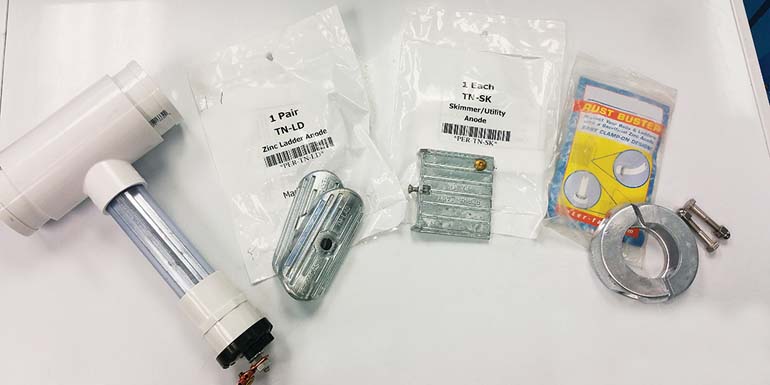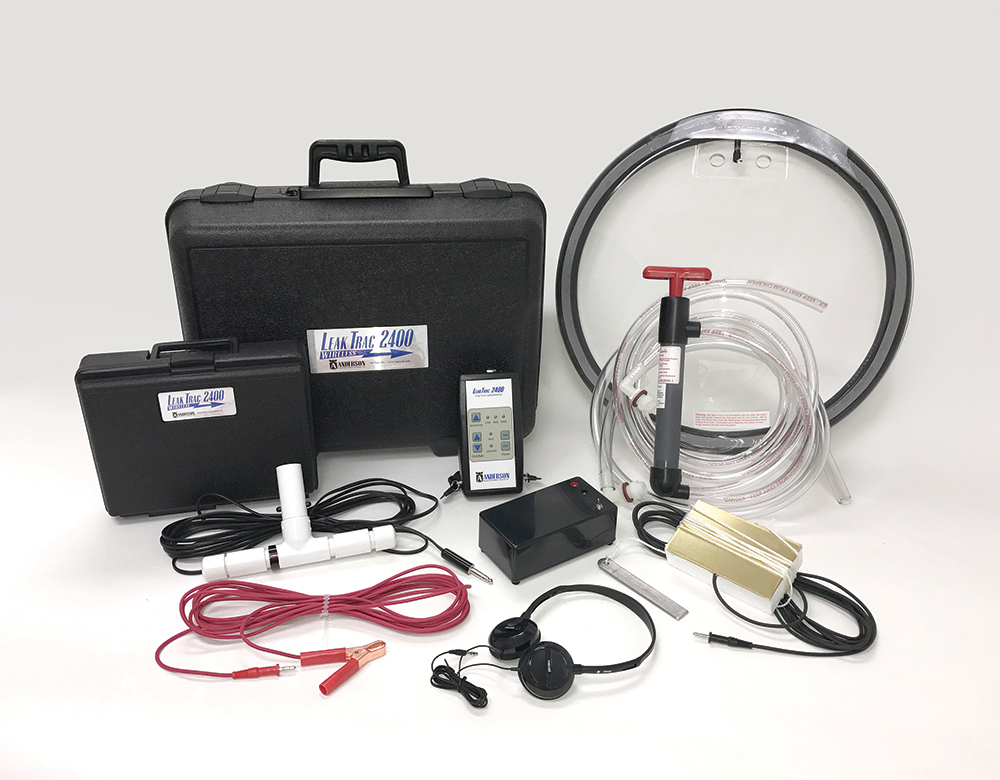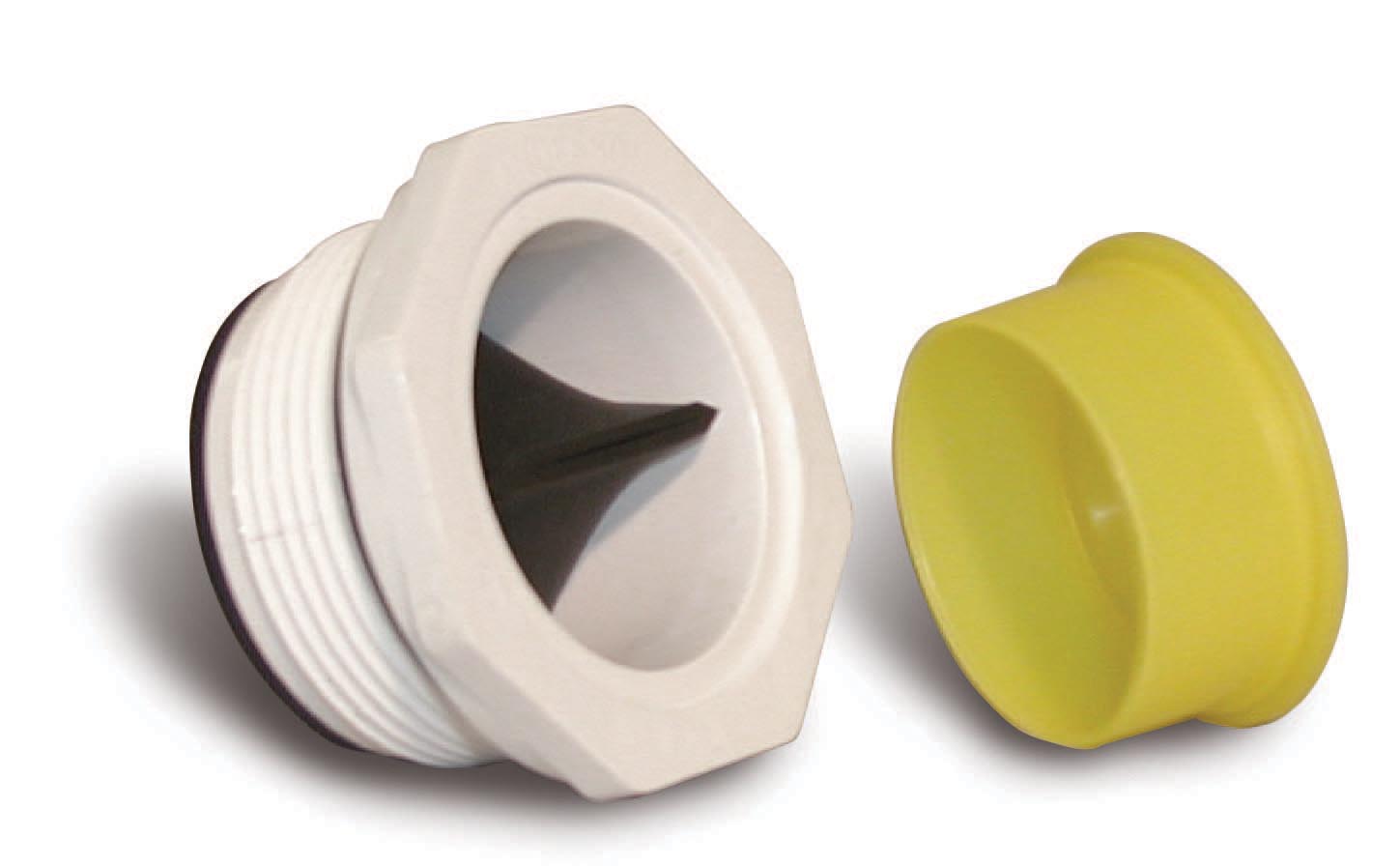Understanding the electromechanical process of galvanic corrosion

By Steve Goodale
Steel pool walls are eroding and ladder handrails are turning black. New heaters are failing after one year and warranties are void because the casing was not bonded. What is going on here? The pool industry has some difficult-to-grasp concepts such as water chemistry; where on the surface it seems easy enough to resolve, but when traditional remedies do not fix the problem, customers are left without answers. There is no better example of this than galvanic corrosion and, more specifically, the damage it can potentially cause to pools, spas, and peripheral components. Understanding how and why galvanic corrosion occurs can help those in the field provide better service to their customers.
What is galvanic corrosion?
Galvanic corrosion is an electromechanical process where a potential difference, measured as voltage, exists between dissimilar metals and alloys when they are placed in electrical contact within an electrolytic solution. For instance, placing two different metals into salt water will make a basic battery. Using a voltmeter, voltage can be measured between the differing metals that are in contact with the water. In essence, a saltwater pool is a large battery that can generate a potential difference across any differing metals introduced to the water.
Stainless steel, galvanized steel, aluminum (Al), brass, copper (Cu), and titanium (Ti) are all commonly found in pools and related equipment, which is one reason why these corrosion-related failures occur.
All pools using chlorine (Cl) can potentially contain enough salt to allow for the water to conduct electricity. In the case of saltwater chlorine pools, the risk and the ensuing damage from galvanic corrosion is greater as salt levels are much higher.
Following this logic, ships that operate in saltwater seas have extensive protection systems in place to mitigate this problem. The salinity of ocean water is roughly 35,000 parts per million (ppm), which is 10 times more than a typical saltwater pool. These extremely harsh conditions have long since exposed the destructive force of galvanic corrosion and the need to control the problems associated with salt water, metal, and electricity in a galvanic couple (the corrosive cell development when two different metals are separated by an electrolyte).
As a frame of reference, the sodium level in municipal tap water might range between 20 and 200 ppm, while a pool maintained with traditional chlorine may contain a sodium level between 300 to 1000 ppm. Sodium levels in saltwater pools typically average 3000 ppm. From zero ppm to the levels of salt found in sea water, the increase in galvanic activity is nearly linear as the sodium level increases.
Two different metals submerged in salt water may have a potential difference between them, allowing an electrical current to pass from the least noble metal (anode) and travel through the electrolyte (salt water) to the more noble, less active metal (cathode). During this process, the electric current results in advanced corrosion of the anode as it dissolves into the electrolyte (i.e. galvanic corrosion), and inhibited corrosion of the cathode (i.e. cathodic protection). The greater the electrolyte’s conductivity in the solution, the greater the damaging effects of the electrochemical process.
That said, pool water is an electrolytic solution. Pure water does not conduct electricity; however, impurities in the water do. Salt, in particular, is a good conductor, and since chlorine—in all forms—is sodium based, all pools using this sanitizer are at risk of galvanic corrosion. This means the damaging effects multiply as the salt levels increase (due to the increased conductivity of the water). Therefore, saltwater pools have an elevated risk for this type of damage. To prevent this destructive process, a fair amount of electrical comprehension is required.





